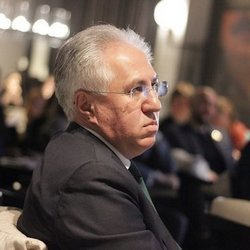Under waste pressure: Europe urgently builds factories like Kazan WIP
Europe’s waste recycling industry is experiencing a construction boom: 30 Waste Energy plants are erected in the EU now, which are to cover at least partly existing shortage of capacities. It is noteworthy that all incineration plants will use grate firing technology — the same that will be used in future Russian plants, including the WIP near Kazan. Read in Realnoe Vremya’s review the characteristics of the plants that are now built in Europe, the essence of the new technology that Kazan environmental activists didn’t trust, what countries “waste” the most and what they do with accumulated residues.
Shortage of capacities
EU countries turned out in a complicated situation: on the one hand, the instruction presses them. According to it, they can dump no more than 10% of communal waste by 2035. On the other hand, the forecasts are discouraging: Europe will generate 142 million tonnes of mixed waste a year by the same 2035. For better understanding: now the total capacity of European plants generating energy from waste is about 90 million tonnes a year. 11 million tonnes is dumped. Europe is trying to cover the shortage of capacities of 41 million tonnes by launching 30 Waste Energy plants at once about which we will tell you about in detail below.
In general, the experience of Europe’s advanced countries in communal waste treatment as well as Japan and the USA shows that a combination of recycling of what can be reused and incineration of the rest is the optimal way of getting rid of waste today. Dumping, especially on uncontrolled landfills, is a fate of lagging countries.
As Realnoe Vremya’s analytic staff found out, as of 2018, Japan burnt 80% of all waste, another 13% was composted, 5% was recycled. 35% of domestic waste was burnt in France, 32% was in Germany, 31% in Great Britain, 19% in Italy, 13% in the USA.
As for waste sorting with fractions suitable for reuse, it accounted for 48% of all communal waste in Germany, 34% in the USA, 26% in Italy, 22% in France. In Russia, this indicator in 2018 was just 10%.
Waste leader
If we have a look at waste generation, Russia exceeds its neighbours in the Eurasian region many times. According to Realnoe Vremya’s analysts, all 28 EU countries generated 2,5 billion tonnes of waste altogether in 2018. This indicator totalled 5,4 billion tonnes in Russia alone.
However, there is an important proviso: mineral production accounts for a lion’s share of waste (87%). If we exclude this indicator, we can see that the waste generation level per capita in our country is by 23% higher than in Europe.
If we are considering only municipal waste, Russians won’t almost differ from Europeans. In 2018, an average Russian generated 1,13 kg of waste a day — approximately like an average Belgium and Norwegian. Moreover, a Danish citizen generates much more waste (2,17 kg a day), while a resident of Poland does much less (0,79 kg).
Nevertheless, the amount of waste isn’t going to reduce — either in Russia or other countries, while the issue of its smart recycling becomes more topical year after year.
New plants
Most incineration plants that Europe urgently began to be built now in an attempt to cover a visible shortage of capacities will appear in its southern and eastern parts.
For instance, this year thanks to a €150-million grant from the European Commission, Lithuania will launch two plants converting waste into energy. The one built in Vilnius (the second will open in Kaunas) can recycle up to 160,000 tonnes of communal waste a year, while its capacity will be 90 MW. This will help provide 80% of Vilnius households with energy and reduce annual heating expenses by €13 million.
Two Waste Energy plants will open in Gdansk (the WIP’s capacity will be 160,000 tonnes) and Olsztyn (120,000 tonnes) in 2023. €103 million were allocated to subsidise these projects. Switzerland, which is already rich in WIPs, began to build another one this year — in Zuchwil. The facility is planned to recycle 221,000 tonnes of communal waste and generate 53,7 MW of electrical energy. Another 12 recycling plants will emerge in Great Britain, which already has 46 incineration plants.
Like in Kazan
Almost all enumerated plants will use grate firing technology. It includes several stages: everything begins with flue gas purification in the boiler when all harmful substances are eliminated at 1260 degrees.
The second stage takes place in a dry treatment reactor where slaked lime and activated carbon neutralise acids and heavy metals. The third stage is a sock filter that catches the smallest particles of dust and fly ash. The analogous technology is used in all Waste Energy plants built by RT-Invest in Moscow Oblast and Tatarstan. We should remind you that the green light to build the waste incineration plant near Kazan was given as early as 2016. Then it was claimed that its construction would begin in autumn 2017, while 22-26 billion rubles of investments would pay back thanks to the tariff on electrical energy.
Mistrust and doubts
The idea of building a waste incineration plant near Kazan didn’t please everybody, but the negativism was rather linked to a lack of information, which quite expectedly causes mistrust and doubts. To explain to the population how this technology ran and prove its safety, the investor of the Kazan WIP AGK-2 took activists and journalists to Switzerland in 2018 where a waste incineration plant like ours has been operating for long. Realnoe Vremya talked about the familiarisation with the WIP near Swiss Luzern in detail.
Chairman of the Russian Ecological Society Rashid Ismailov who described the conflict existing in Russian society in detail said about the mistrust in the authorities when it comes to environmental issues.
